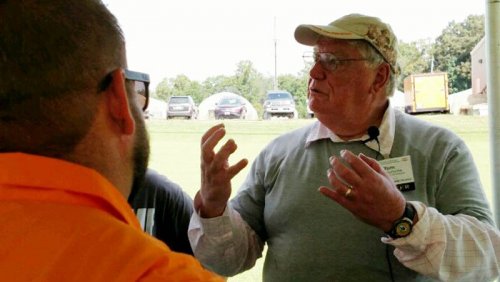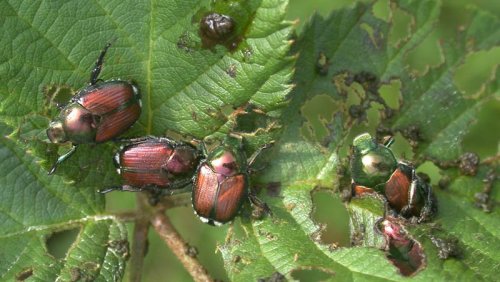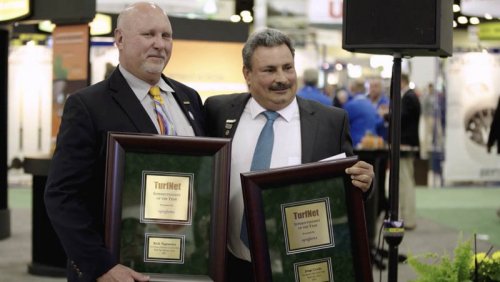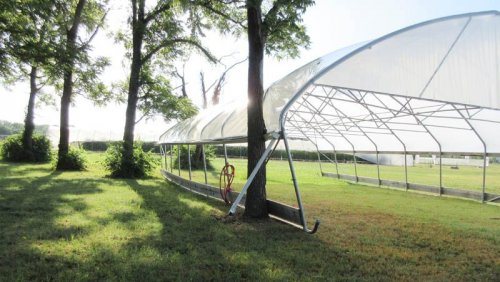
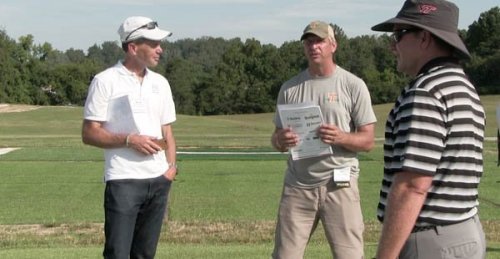
At the recent University of Tennessee Turf and Ornamental Field Day, trials underway range from weed-control and disease-management experiments to finalizing practices to better understand green-height zoysiagrass and developing a growing degree day model for plant growth regulator use on ultradwarf putting surfaces.
One cultivar, a hybrid bred at Texas A&M and grown by Bladerunner Farms under the experimental name DALZ 1308, has shown promise for use on putting greens, in part, because of its shade tolerance.
"When it comes to shade, Bermuda will come in fourth in a three-horse race," said John Sorochan, Ph.D., professor of turfgrass science at UT. "Zoysia has better shade tolerance than Bermuda, though not as good as bentgrass. It has a dark green color that looks more like bentgrass than zoysia."
Zoysiagrass can require fewer inputs and can be more tolerant to biotic stress factors, including diseases, insect pests, shade and salt than ultradwarf Bermudagrasses, according to Texas A&M. The primary drawback for use on greens has been ball roll speed.
"It's dense, durable and has excellent wear tolerance," Sorochan said. "The recuperative potential is slower than Bermuda. Right now, we're looking at the best cultural practices and how it reacts to plant growth regulators.
"We want to know how to manage them before they get onto a golf course. We want to know what diseases will be prevalent. What are the fertility rates? How do we manage them? These aren't going to be greens that you'll want to come in and aerify in the middle of summer."
Also in its infancy is a trial to develop a growing degree day model for PGR use on ultradwarf greens.
Plots under trial since May at the East Tennessee Ag Research and Education Center are receiving 3 ounces weekly, 3 ounces every 220 GDD and 1.5 ounces twice per week.
So far, that 200 GDD trial has shown UT's academic team that many superintendents growing ultradwarf greens in the transition zone probably are using too much product without appreciably more benefits.
Jim Brosnan, Ph.D., shares research on developing a growing degree day model for PGR use on ultradwarf Bermudagrass. "There is 6 inches difference between the growing degree day program and two shots per week. Is that 6 inches worth it?" said UT's Jim Brosnan, Ph.D. "Maybe there are clubs where that matters.
"What we want you to take away is to think about it. We've gotten to the point where it goes into the tank every time you spray greens regardless of what you're spraying and no thought behind why you are doing it."
Excessive use can make turf more susceptible to disease, including curvularia and take-all root rot.
"We need to space those applications out and get off those growth regulators as we go into fall," said UT plant pathologist Brandon Horvath, Ph.D., in a recent TurfNet University webinar on fall and winter prep. "It is important to remember that Bermudagrass is much more sensitive to these growth regulators than bentgrass is, so the growing degree day model that was developed for bentgrass is not applicable for Bermudagrass, and that's a really critical piece of making sure that we reduce these diseases."
The study is ongoing.
"We're getting to a point in the season where it soon will no longer be optimal for ultradwarf growth anymore, especially here in eastern Tennessee," Brosnan said. "I know superintendents who are on a 3-ounce or higher program through September and even into October. We're not talking about taking any of these programs lock, stock and barrel on all 18 greens. Our hope would be that you take this and think about how you've been using plant growth regulators and some changes you could make: A, to make things easier for yourself and B, an environment where you get similar conditions and less disease after we get all the data in house."
- Read more...
- 2,642 views


